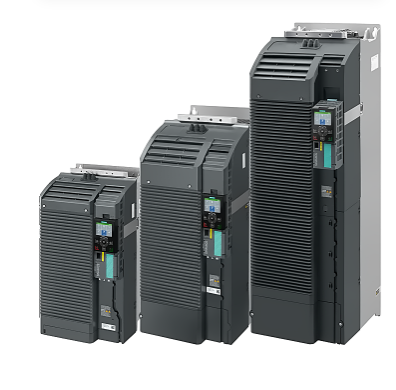
In today’s world, industries are always looking for ways to save energy, reduce costs, and improve efficiency. One of the most effective tools to achieve this is the Variable Frequency Drive (VFD). A VFD helps control the speed and torque of electric motors, which are commonly used in various machines. By adjusting the motor’s speed, a VFD can optimize its energy use. In this blog, we’ll explore the different uses of VFDs, how they work, and why they are so valuable in many industries.
What is a Variable Frequency Drive (VFD)?
A Variable Frequency Drive (VFD) is an electronic device that adjusts the speed of an electric motor by controlling the frequency of the power supplied to the motor. Most motors operate at a constant speed, but there are situations when a motor needs to operate at different speeds. This is where a VFD comes into play. By using a VFD, industries can control how fast or slow a motor operates, making it highly versatile and efficient.
How Does a VFD Work?
Before we dive into the uses of a Variable Frequency Drive (VFD), let’s understand how it works. Electric motors run based on a power supply frequency, which is usually fixed at 50 or 60 Hz depending on the region. The VFD alters this frequency, thus changing the motor speed. For example, lowering the frequency will reduce the motor speed, while increasing the frequency will speed it up. This control allows operators to adjust motor performance according to specific requirements, saving energy and reducing wear and tear.
Major Uses of a Variable Frequency Drive (VFD)
Now that we know what a Variable Frequency Drive (VFD) is and how it functions, let’s look at some common uses of VFDs across different industries.
1. HVAC Systems
One of the most widespread applications of a Variable Frequency Drive (VFD) is in Heating, Ventilation, and Air Conditioning (HVAC) systems. HVAC systems need to control the airflow and temperature in buildings. Traditional systems operate at full speed, wasting energy when full power isn’t required. By using VFDs, HVAC systems can adjust the speed of fans, pumps, and compressors, optimizing energy use based on demand. This not only saves energy but also reduces maintenance costs and increases system lifespan.
2. Pumping Systems
Pumping systems often require variable flow rates, especially in water treatment plants, irrigation systems, and manufacturing processes. A Variable Frequency Drive (VFD) allows operators to change the speed of pumps according to the required flow. For instance, during periods of low water demand, the pump speed can be reduced, saving energy. This flexibility is critical for applications where water flow needs to be constantly adjusted based on various factors, making VFDs an essential part of modern pump systems.
3. Conveyor Belts
Conveyor belts are used in industries like manufacturing, packaging, and mining to move materials from one point to another. The speed at which these materials are transported often needs to change depending on the production process. With a Variable Frequency Drive (VFD), conveyor belt speeds can be adjusted in real-time, improving efficiency and reducing the risk of jams or overloading. This results in smoother operation and less wear on the machinery.
4. Centrifugal Pumps and Fans
Centrifugal pumps and fans are used in a wide range of industrial applications. They often run at full speed, even when full power isn’t needed. A Variable Frequency Drive (VFD) allows the speed of these pumps and fans to be reduced during low demand, helping to save energy and extend the life of the equipment. For instance, in a cooling system, fans may only need to run at full speed during peak cooling times. During off-peak times, the VFD can lower the speed, saving significant amounts of energy.
5. Manufacturing Machines
Many manufacturing processes require precise control over the speed of machines to ensure product quality and consistency. A Variable Frequency Drive (VFD) offers the ability to fine-tune the speed of motors in real-time, allowing operators to adapt to changes in production needs. This is particularly useful in industries like automotive, food processing, and textiles, where product specifications can vary. VFDs also help reduce wear and tear on machinery, improving reliability and reducing downtime.
6. Energy Savings
One of the biggest reasons industries use a Variable Frequency Drive (VFD) is for energy savings. Motors consume a large portion of electricity in most industrial settings, and running them at full speed all the time leads to significant energy waste. By using VFDs to control motor speed, companies can reduce their energy consumption dramatically. In fact, energy savings of up to 30% are possible in some applications, which also leads to a reduction in electricity costs and a smaller carbon footprint.
7. Elevators and Escalators
Elevators and escalators are another common application for Variable Frequency Drives (VFDs). These systems require smooth acceleration and deceleration to provide comfort to passengers. A VFD ensures that elevators and escalators start and stop smoothly, reducing wear on the motors and improving safety. In addition, VFDs can save energy by reducing the speed of these systems during periods of low use.
Conclusion
In conclusion, the Variable Frequency Drive (VFD) is an incredibly versatile tool used across many industries to improve efficiency, save energy, and enhance control over processes. Whether it’s in HVAC systems, pumps, conveyors, or renewable energy setups, the benefits of using a VFD are clear. By optimizing the performance of motors and reducing unnecessary energy consumption, VFDs play a key role in making industrial operations more sustainable and cost-effective.


